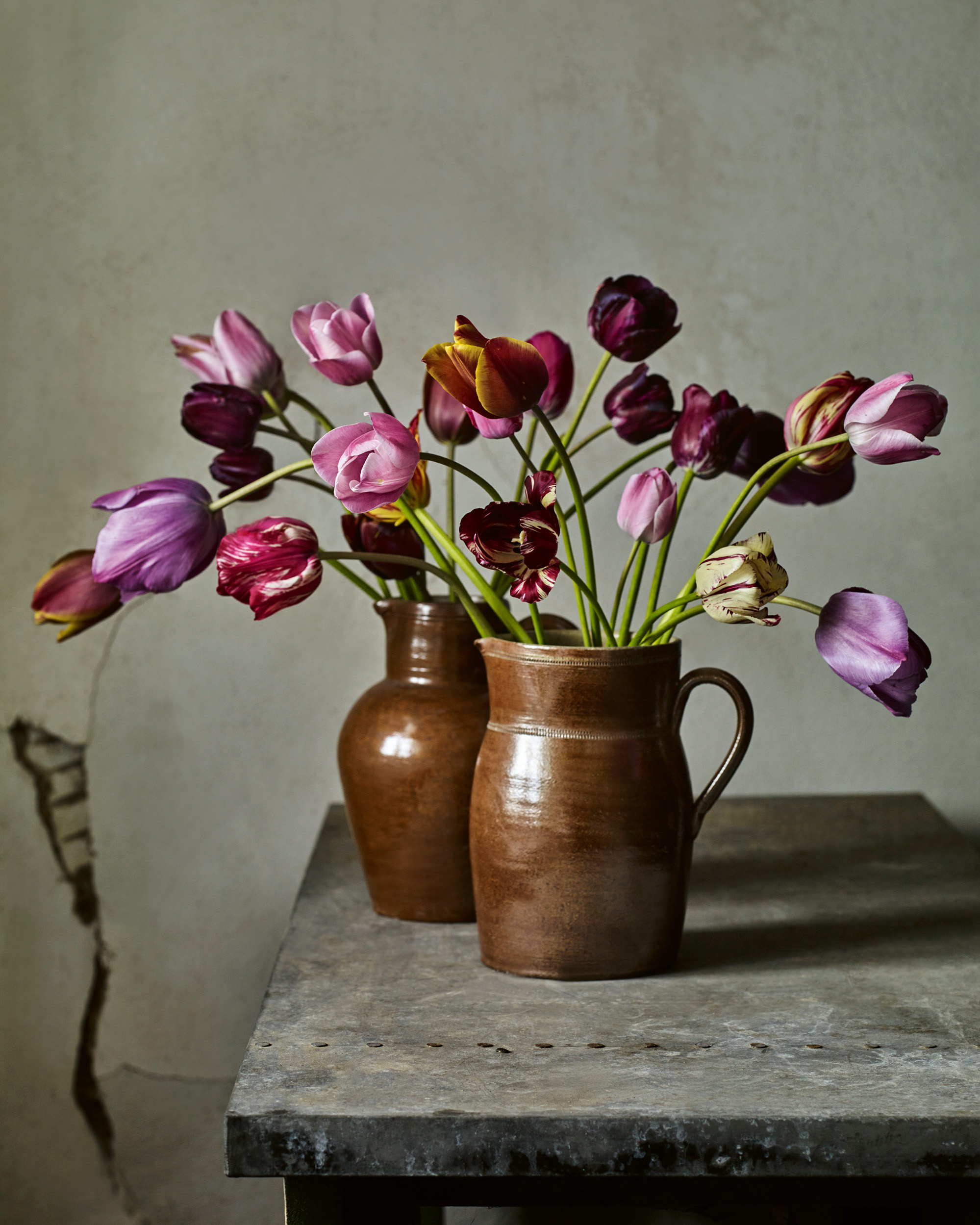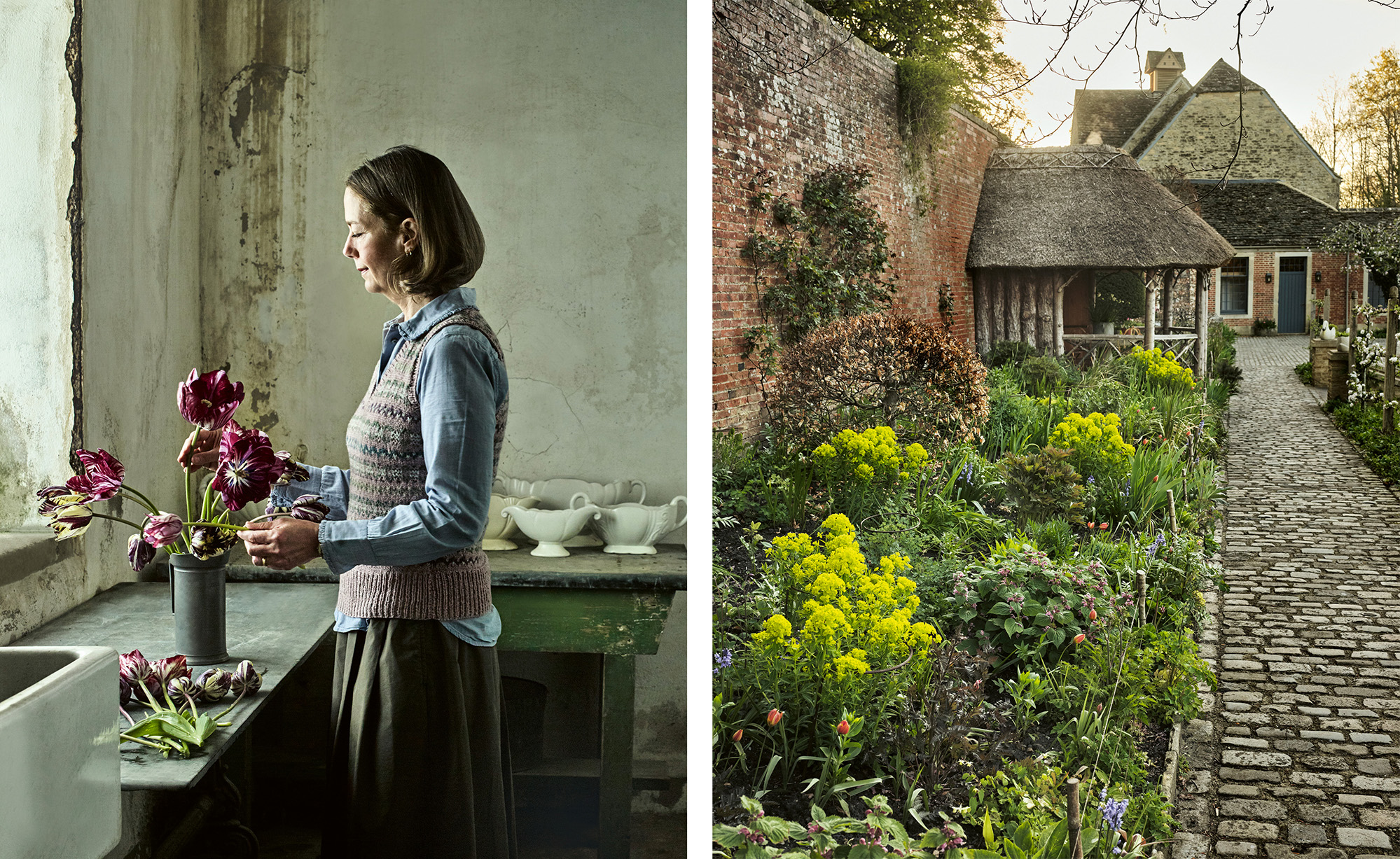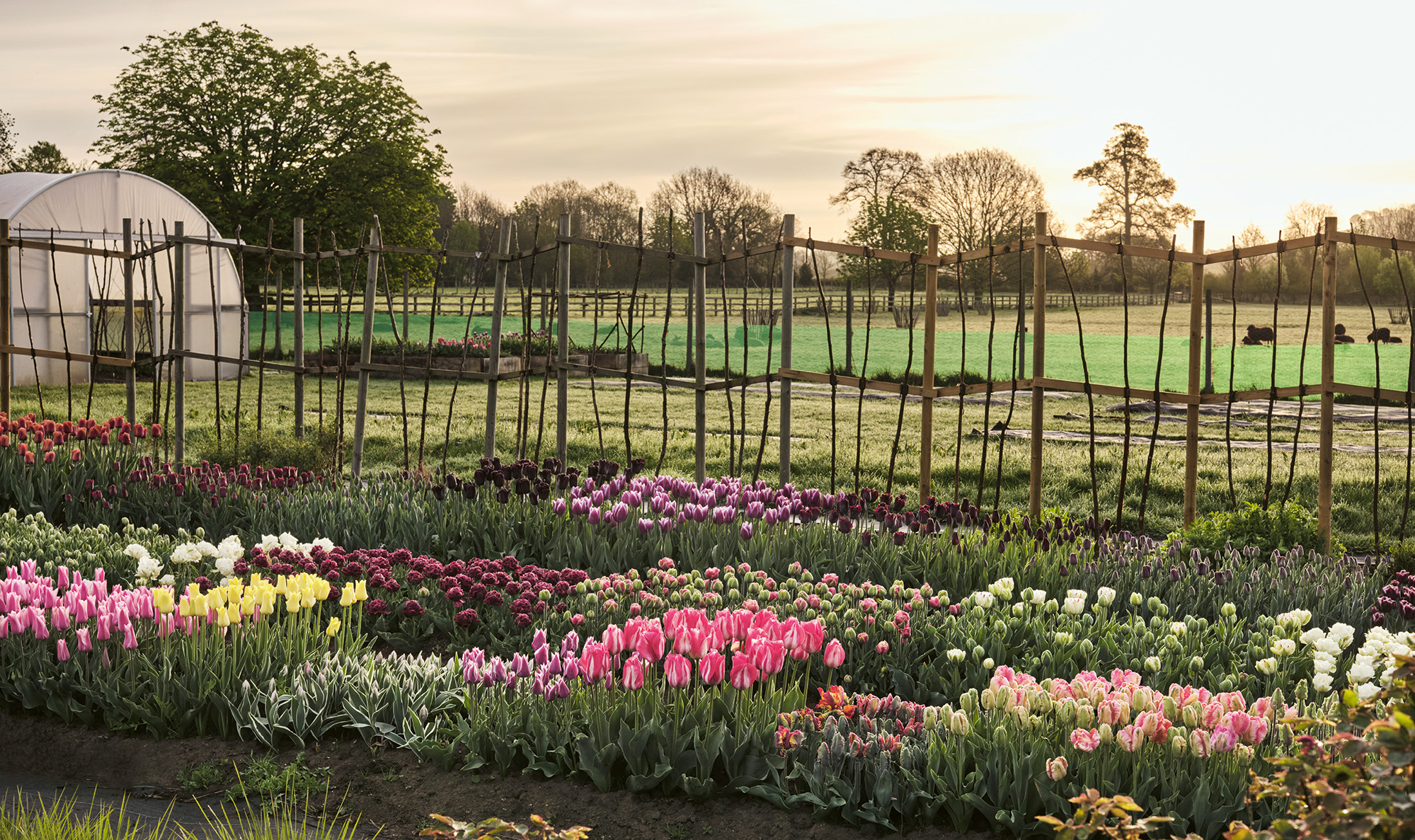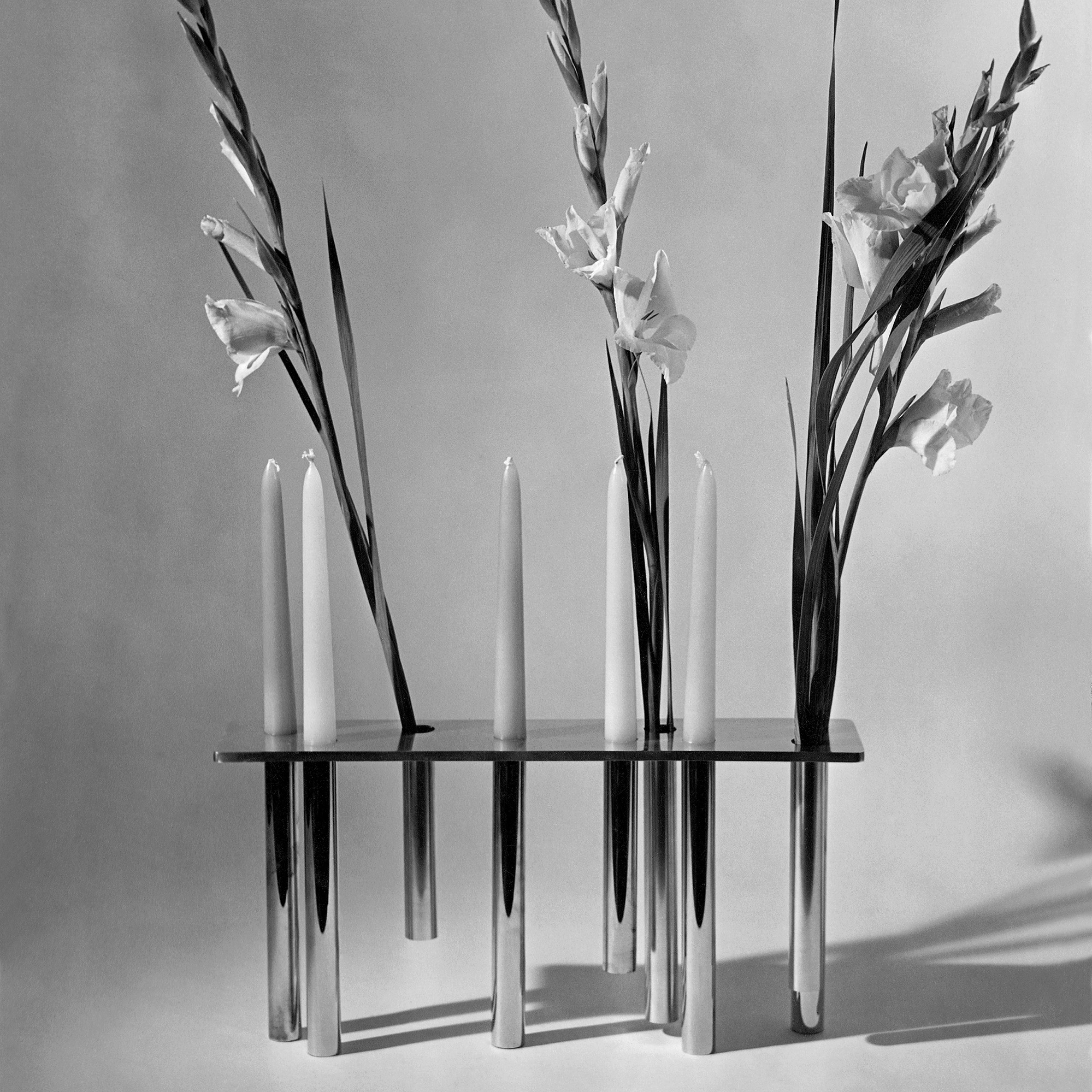Mark Your Calendars: The Grand Tourist 2026 Guide to Art and Design Fairs
A great design or art fair sets the tone for the year, defines the conversations, and points to where taste is headed. These are the fairs defining 2026. Save the dates.

You’re reading The Grand Tourist Curator, our weekly newsletter with the latest handpicked news and insights from the worlds of art, design, style, food, and travel. Sign up here to get The Curator delivered directly to your inbox.

Inside the Fascinatingly Rich and Complex World of the Tulip
Tulips are incredibly popular, utterly ubiquitous, and yet can sometimes be overlooked by a certain crowd as lacking in glamour, like orchids or, heaven forbid, hydrangeas. Indeed, the history of the tulip is forever synonymous with a tale of the first hype-driven boom and bust. But that doesn’t mean the flower can’t be as rare, beautiful, delicate, and interesting as any other. A new book gives this eternally charming plant its proper due: “The Tulip Garden: Growing and Collecting Species, Rare and Annual Varieties,” (Phaidon) by Polly Nicholson. A specialist grower and expert, Nicholson runs Bayntun Flowers in Wiltshire, England, cultivating many rare and coveted varieties at a walled garden of an estate called Blackland House. I wanted to ask Nicholson to explain a bit about her incredible book, the fascinating universe of tulips, and which of her favorite historic gardens in the UK she recommends visiting. phaidon.com —Dan Rubinstein
DR: You’ve been growing tulips for more than 15 years. How did that begin for you? And why tulips?
Polly Nicholson: My tulip journey grew from an initial lack of confidence, funny enough. We had moved from a London townhouse with a small rectangle of grass to a manor house in Wiltshire, with a five-acre garden and endless stretches of empty herbaceous beds. Even though I had recently completed a horticultural diploma at The English Gardening School, based at Chelsea Physic Garden, I didn’t have the knowledge or experience to design large borders, so I simply packed them full of tulip bulbs instead. As well as conveniently filling the spaces over the first winter and spring, I had my own homegrown crop of my favorite fresh flowers to fill our new home throughout the months of April and May.
Blacklands has quite the history to it. What makes it a great place to grow tulips?
Our home is called Blacklands because of the black alluvial soil that we garden on, enriched over millennia by sediment deposited from the river Marden, which wends its way through the property. It’s quite free-draining, which is crucial for successful tulip growing. The last thing tulip bulbs want is to sit in waterlogged soil over the winter months, as they’ll most likely rot and fail to flower. To further improve our growing conditions, we include a good dose of horticultural sand in the soil mix, and we have installed a series of raised beds for our historic collection. Not only does this improve drainage, but it saves my back when I have to plant out the entire historic collection each November and December, and harvest them in July once they’ve finished flowering. We lift every single historic bulb by hand, dry it, clean it, and catalog it for our records and those of Plant Heritage.

I think most everyday fans of the tulip would be surprised to know how many varieties there are. What would be the most difficult to grow?
There are over 2,500 tulip bulbs on the market at any time, and I grow in the region of 250 different varieties including the historic collection, all the species ones (that initially originated in the wild), and annual—otherwise known as hybrid—cultivars. The annuals are easy to grow, and I have fun changing schemes in our vintage containers each year. But I prefer the challenge of growing the old, rare varieties. The hardest of all to grow are the English Florists’ Tulips that date from the 19th century and aren’t available to buy commercially. The bulbs exchange hands through the Tulip Society, and I might have only one or two specimens of each cultivar. They’re exceedingly precious, and I feel a tremendous responsibility to preserve them for future generations. These tulips have to be inspected on a regular basis for slug damage or any sign of disease, and they’re sheltered from the sun when in flower.
With your background in antiquarian books, who would you say was the greatest tulip grower in history?
I’d say 16th-century botanist Carolus Clusius. He was the first director of the botanic garden at Leiden, where he grew tulip bulbs successfully and distributed a portion among his fellow gardeners, ensuring their spread and survival. He guarded his collection from thieves day and night, since there was a mounting fervor for tulips in the buildup to the period we call Tulipmania. The earliest tulip in my historic collection, T. Duc van Tol Red and Yellow, is known to have been grown by Clusius, and I love this link with the past. I, too, guard my tulips with tall fences and locked gates, but this is to prevent our flock of Hebridean sheep from getting in and wreaking havoc!
If there’s someone who wants to grow tulips in their own yard for the first time, what’s your most important bit of advice?
Start with the soil, as this is the secret to healthy tulips. We garden organically and are certified with the Soil Association UK, so we only ever use natural inputs: homemade compost that includes well-rotted manure from our horses, organic seaweed feed once the tulips are in full growth, and organic slug pellets when experiencing a prolonged rainy period. There’s a belief that it doesn’t matter what soil you grow your tulips in, as they are only expected to last one season, but we try to recycle as many of the annual bulbs as possible by drying them after they’ve flowered in containers and replanting them in the rough grass verges along our driveways. They need to absorb nutrients from a healthy, microbially active soil in order to produce a nice, new flowering-size bulb the following year.
The UK has so many historic and incredible gardens. Any favorites?
Iford Manor near Bath is a wonderfully mature, romantic garden that was designed by Harold Peto between the years of 1899 and 1933, when he lived there. Although the garden is not centered around tulips like mine, the head gardener, Steve Lannin, certainly knows his tulips and is a skilled grower. Any gardens designed by Arne Maynard are also firm favorites of mine. We engaged him to help build upon the existing bones of the garden at Blacklands soon after our arrival, and he has been intrinsic to its gradual development. His own medieval home and garden at Allt y Bela in Usk, Wales, is a place of exquisite beauty.
The history of tulips is quite long and extends back to the Middle East centuries ago. Is there a favorite tidbit of history that you think speaks volumes about the joys of this flower?
My friend and mentor Anna Pavord, author of “The Tulip” and “The Seasonal Gardener,” writes evocatively about the extravagant parties that were held by sultans in the palace gardens of Constantinople during the Ottoman Empire, where mirrors would be angled to create an illusion of endless beds of tulips, and tortoises would have candles fixed to their shells to cast light upon the blooms. At Blacklands, we have a single tortoise called Fern, and I have the occasional urge to strap a candle to his back and send him off through the tulip beds. Unfortunately, I don’t think he would add much to the scene, and more likely he would eat the leaves or spill wax on them. Or worse, himself.

A Foreign-Born Lensman Explores the American Landscape; Damien Hirst Lands in Mexico City; Tiepolo is Feted in Paris; and More Openings
São Paulo, “Asuka Anastacia Ogawa: Melinha” (Until May 11)
Born in Japan, painter Asuka Anastacia Ogawa spent her adolescence in rural Brazil and later attended high school in Sweden. The diverse backdrops of Ogawa’s formative early years inform her dreamlike portraits laden with symbolism, which feature androgynous children with piercing stares, set against monochrome landscapes. Nara Roesler São Paulo presents Ogawa’s first solo exhibition in Brazil with 13 custom paintings for the occasion. nararoesler.art
Frankfurt, “Kollwitz” (Until June 9)
An eminent German artist of the 20th century, Käthe Kollwitz’s reputation as a drawer and printmaker has been defined by the suffering she confronts in her ink-soaked works. The Städel Museum celebrates Kollwitz’s enduring rendering of humanity, present in her depictions of mourning, with over 100 poignant works, including her early paintings and experimentation. staedelmuseum.de
Los Angeles, “Visitor – Visiteur” (Until Apr. 27)
Photographer Tseng Kwong Chi—who was active in the East Village art scene of the ’80s—realized that when he wore a Zhongshan suit, he was perceived as the “inscrutable Oriental” by Westerners. His most famous body of work was born out of this stereotype. In the “Expeditionary Series,” Tseng takes unsmiling self-portraits wearing the suit and a pair of sunglasses while posing in front of the Statue of Liberty, Disneyland, and other iconic tourist sites. Commonwealth and Council is showcasing nine of these surreal portraits. commonwealthandcouncil.com
Mexico City, “Damien Hirst: To Live Forever (For a While)” (Until Aug. 25)
The controversial British artist Damien Hirst, who fronted the UK art scene of the ’90s, is exhibiting in Mexico for the first time. To celebrate its 10th anniversary, the Museo Jumex is showcasing some 60 of Hirst’s sculptures and paintings from the past three decades of his career, featuring both well-known and rarely seen works. fundacionjumex.org
Paris, “The Tiepolos, Invention and Virtuosity in Venice” (Until June 30)
Revered for his luminous frescoes, Venetian Giovanni Battista Tiepolo is regarded as one of the greatest painters of 18th-century Europe. In this exhibit, the Beaux-Arts de Paris brings together the delicate drawings and etchings of Tiepolo and his two sons, Giandomenico and Lorenzo Tiepolo, who trained as his assistants. The sketches, some of them obsessively practiced iconographies, reveal a portrait of the relationship between father and sons in the studio and their unmistakable talent. beauxartsparis.fr
West Hollywood, “Richard Neutra: Travel Drawings” (Until May 4)
The Austrian-American architect Richard Neutra spent most of his career living and working in Southern California, where he designed his most prominent works, like the Kaufmann Desert House. A curious observer, Neutra traveled the world sketching the ceilings of French cathedrals, the inside of traditional Japanese houses, and even scenes from the airport. His drawings from travels throughout Europe, Asia, and the Americas are presented by Louis Stern Fine Arts. louissternfinearts.com —Vasilisa Ioukhnovets

A great design or art fair sets the tone for the year, defines the conversations, and points to where taste is headed. These are the fairs defining 2026. Save the dates.

We assembled our favorite design objects for the people on your list that have everything, including taste.

We checked in with our former podcast guests who will be inching through Miami traffic, unveiling new works, signing books and revealing new projects this year.